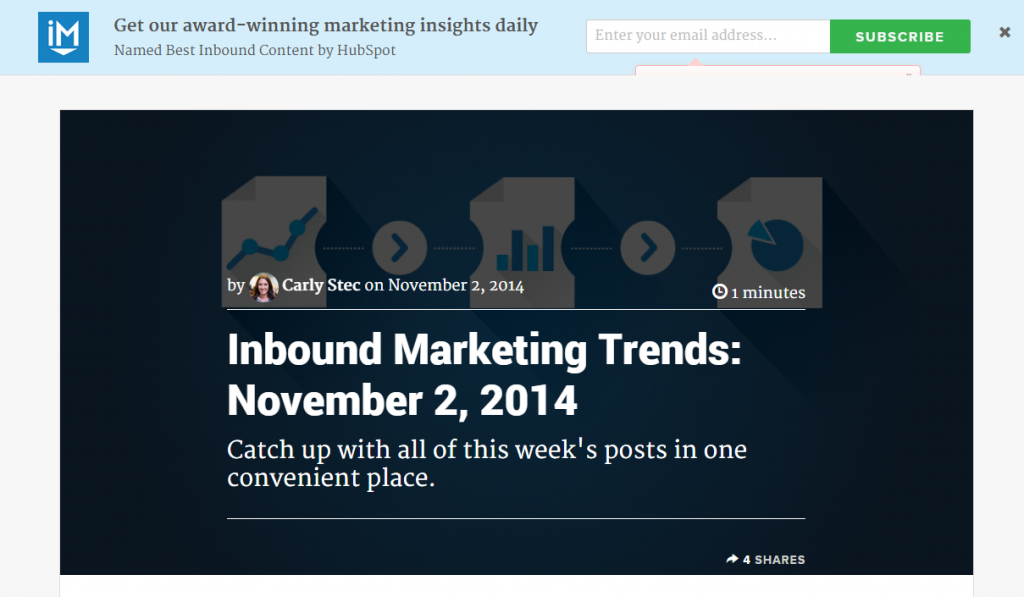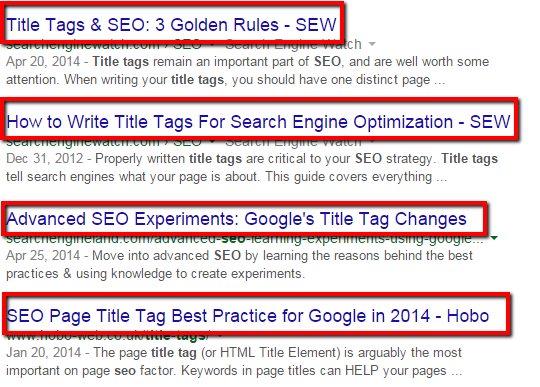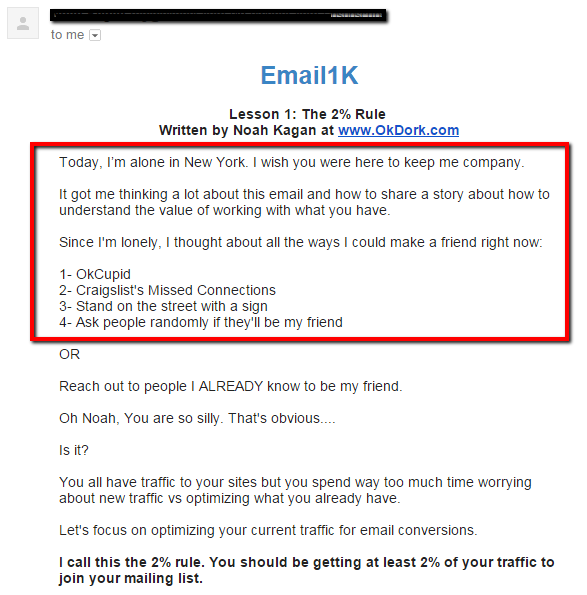5 Practically Effortless Ways to Improve Your Online Traction
“Don’t throw all your eggs in one basket.” There’s a phrase you’ve heard time and time again.
Your mom, your college adviser, and your financial planner (AKA your buddy from college) all told you this same piece of advice.
Well at the very least moms are always right. And now that you’re responsible for marketing your online business, which is also your livelihood (and maybe your passion), any potential mishaps can have disastrous consequences.
It’s hard not to listen to the Google horror stories. A successful online business gets slapped in the face with an “Unnatural Links Warning,” and within a few short weeks sees an 80% reduction in traffic and begins a B line towards bankruptcy. If you’re focusing solely on SEO and Google decides you’re not as worthy as you once were, it’s going to be exponentially more difficult to dig yourself out of the SEO hole, and then build your online presence outside of SEO.
Your audience is not crammed into one channel. Some are active on social media sites, others can be better engaged via email, and some are just perpetual web-browsers looking for the latest and greatest content to share.
The point is, if you’re limiting your marketing mix to strictly SEO and Twitter, you’re missing out on the hugely profitable section of your audience that doesn’t care about your tweet, and has never seen your page 2 positioning for keywords you’re targeting.
Below I’ve put together a list of 5 marketing techniques that you should bring to your business today. If you already have a little traffic (+/-500 hits/month), these strategies are a great way to get some oil on that engine.
1. Make Your Website a Conversion Powerhouse
Your website is your house. If you cut corners building it, your roof is going to start leaking and your wallpaper will begin peeling off. Don’t let that happen.
From a marketing standpoint, you want your website to be a conversion powerhouse. There are so many tools available that allow you to capture interested leads. The point is to make it insanely easy for a visitor to register for your product or sign up for your newsletter.
It goes like this … they read an article you’ve posted, and after 2 minutes on the page, BAM! an opt-in popup appears that promises them more of your quality content, in exchange for their email.
There are many ways to use opt-in popups. Check out how Impact Blog uses a sticky-header that appears after you click on a post.

It’s important to recognize the icy-thin line between valuable and invasive. If a visitor lands on your page and before they can even hit the scroller they’re smacked in the face with a popup that claims to solve the world’s problems, you probably won’t have much luck.
There are so many tools you can use to optimize your website to become a registration generation locomotive. Here are a few I’ve had experience with:
1. Wisepops – It’s not a plugin, but a small script that you place on you website. After you sign up (for free), and it will take you 10 minutes to create a customized pop-up to engage visitors.
2. Dreamgrow – A nicely designed and customizable WordPress plugin that initiates a scroll-trigger popup box for newsletter sign-ups.
3. Icegram – A new WordPress plugin that’s free and has a lot of features. It’s got a few bugs here and there, but they’re working on improving it daily.
2. A Few Simple On-page SEO Tweaks
A complete Search Engine Marketing (SEM) strategy encompasses a gut-wrenching list of highly technical processes that will make your head spin. Larger companies have in-house departments devoted to SEM, and spend millions on keyword-targeting ad campaigns and search optimization strategies.
But if you’re reading this than you, like me, don’t have millions to spend on a keyword ranking campaign. But it’s still important to cover your bases. Here’s 4 on-page SEO strategies you can optimize right now:
1. Keywords – Always know what keyphrases you intend your pages to rank for. This is a matter of identifying your target audience – who is reading this article, what’s it about, and what do they expect to get out of it? Use keyphrases periodically throughout your writing, but don’t be unnatural about it. Rand Fishkin always has something to say about this matter.
2. Title tags – SEO 101. Your title tag is the first thing searchers see when viewing your webpage on Google, so be clear & concise with your wording. Convey meaning in your titles by appealing to a pain, a need, or human curiosity. Unless your Entrepreneur Magazine, people probably don’t care about your article titled “10 Tools To Get Things Done.” Optimize your title tag’s both for Google and for humans.
Here are 4 examples of clear and concise title tags:

And here are a few examples of some not so great title tags:

Title tags should be short enough to be readable at first glance, and long enough to convey meaning. This one doesn’t say a word about the contents of the article. There are 5 words in all, two of them are “seo,” and one of them is is the company’s name.

Similar to the previous example, this title tag says very little about the benefits the article will provide to the reader. It also only has 6 words, 50% of which are the company’s name.
3. Images – Take a few minutes to optimize each and every image on your website. You can do this pretty easily. First off, make sure the name of the image file you’re uploading to your website is something relevant to the subject matter on the page. For example, if you’re talking about seasonal flowers, don’t save your image as Image01.jpg, but rather SeasonalRosePicture.jpg.
And secondly, include alt text for every image. This will be the text that shows up if the image does not render properly in a user’s browser. Make sure it’s keyword-rich and descriptive, so even if the visitor can’t see the image, they can paint a mental picture of it using your descriptive words. Read more here for some other tips.
4. Linking Structure & Anchor Text – Building a solid online reputation means providing people with great information and great resources. You don’t always have the best stuff to say, but you can point your visitors in the direction of the best stuff. It’s important to have a good mix of internally and externally-pointing links in every articles you post.
And in the anchor text for those links, make sure you use a wide variety of different keywords, unrelated words, and keyphrases. Learn more about this strategy from Ahrefs, one of the best in the business.
3. Send Your Customers an Email
Email almost seems like the forgotten art in online marketing. If you’ve got customers, and you’ve got opt-in forms on your website so you’re growing your audience, why not show them you’re alive?
It’s true, people are tremendously cynical when it comes to email these days. Studiesshow that businesses typically receive open rates around 20%, depending on the industry. So don’t give your readers some more self-promotional blubber that will just add to their already-overweight inbox, like this:

Your audience members are people. They want to learn something new, and they want to laugh while doing it. Capture them with an awesome headline (make it personal), and engage them with an opening sentence (make it even more personal). Then give them some stuff to read, and if you haven’t written anything, curate some of the best content you’ve read this month, and provide 2-3 key insights that you found useful for your business.
Noah Kagan is one of the best in the business. Take a look at how he begins one of his newsletter campaigns..

4. Give Your Blog Some Personality
Content marketing is a buzzword. That’s undeniable. And although buzzwords can get annoying (do growth hacker, snacker content, and disruptive ring a bell?) there’s a reason that everyone is talking about them.
Here’s a buzzphrase for you, just to tick you off: Content is King. It’s true. While small businesses can’t compete with corporate marketing budgets, they can leverage their efforts by dishing out emotionally-charged, human content.
It may seem like an insurmountable task to even begin competing with the best in the business. Why would people want to read my stuff over Inc Magazine or Buzzfeed? But as long as you develop a consistent focus, voice, and perspective in everything you write, visitors will come.
Good things take time. So start building NOW.
And after you’ve written a piece or two, share it. Don’t expect people to just happen upon your blog through a search, you’ve got to put it in their face…again and again.
Don’t shy away from posting the same articles on Facebook and Twitter multiple times per week…and revisiting them next month. Just be sure to change the picture and the headline on the social post itself, and overtime you’ll be able to measure when, where, and what resonates with your audience. It’s really a trial and error process. So be prepared to be in it for the long haul.
5. Pick Your Social Channels (Carefully)
Marketing your business through social media seems simple, but judging the ROI on a Facebook post can get pretty convoluted. Of course there are tools to monitor your level of brand awareness and overall public opinion, but they can cost a lot (for the features you really need), and to get the most out of them you still have to clock a few hours a day using them.
So while it’s important to maintain a presence on your social media accounts, be sure not to spread your efforts too thin. Consider what you want out of the engagement you (could) get from each channel, and then decide if that channel is right for you.
Below is a breakdown of the how the big 5 social media channels can be best used by a small (but growing) business.
1. Facebook
It’s likely that the vast majority of your customers and leads are active on Facebook. So be sure to make yourself visible to them, and share with them stuff that’s worthy of sharing. It’s ever more apparent that soulful pictures are what gets people’s attention on their newsfeed, so place an emphasis on this.
On your page, be sure to develop your company’s personality. Post pictures of yourself, your team, your office, your pets, whatever you want. This is an easy way to gain people’s trust. And always be sure to promote engagement by starting a discussion with your fans.
2. Twitter
Twitter is an interesting beast. It’s pretty overwhelming when you first start out, because you feel like everything you say gets drowned out in 10 seconds (literally) by the thousands of automated posts that just went out on the same subject, to the same audience.
Again, it’s key to post pictures with your tweets. People don’t even read text anymore on Twitter, unless it’s by someone they know & trust. But they do look at pictures. It takes a little more time to compose each Tweet, but you’ll see some more “Favorites” come your way.
Also, be sure to engage with fellow tweeters in your industry. You’d be surprised at the amount of “big names” that will get back to you via Twitter but not via email.
3. LinkedIn
At the very least, it’s important to have your own LinkedIn and a page for your company. This shows your audience that you’re serious. So if this is all you have time for right now, do that.
Next, join groups (as yourself) that are relevant to your industry. After you’ve viewed them for a little while and engaged with fellow members in discussions, decide in which groups you’d like to syndicate your articles.
4. Google+
Once an overlooked, Google+ has quickly becoming the go-to habitat for many business owners. There are tons of active communities in Google+ that you can join, post to, and engage with like-minded people.
The platform is super simple to use. So if you’re worried about a learning-curve, worry no more.
Also, Google offers a number of SEO benefits to those who post great content to it’s social network, read about them here.
5. YouTube
Creating YouTube videos that people actually watch for more than 2 seconds is immensely time-consuming. If you’ve got a talented editor and an awesome idea, then go for it. If not, you’ll get more out of the four networks above.
Seriously, you can do all that in one day
You’re not a superhuman, and you can’t do everything. But with a little more coffee (and water, to stay hydrated) you can do more than you think. Use tools available online, and leverage your own strengths and those of your team members. If you’re seeing a return after a few weeks, rinse and repeat.
Recent Stories
Top DiscoverCloud Experts

Compare Products
Select up to three two products to compare by clicking on the compare icon () of each product.
{{compareToolModel.Error}}

















{{CommentsModel.TotalCount}} Comments
Your Comment